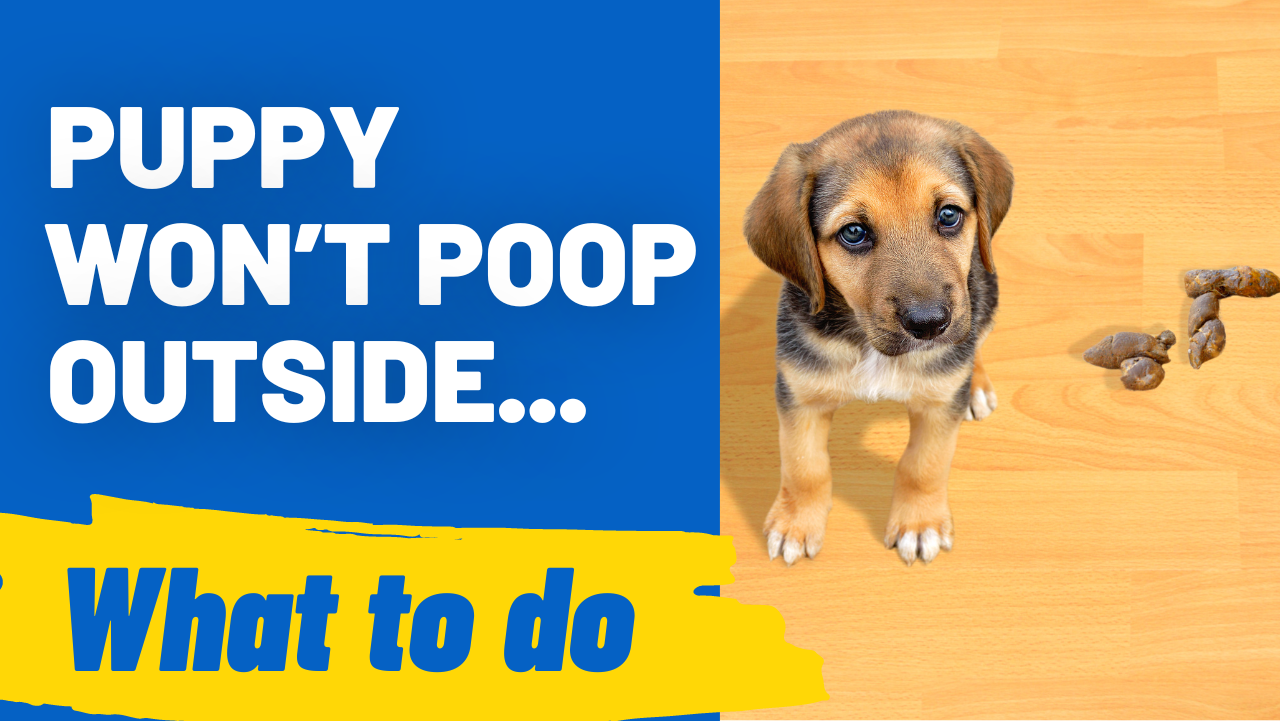If your puppy refuses to poop outside, and instead holds their poop for in the house, then this post has got you covered!
Potty training a puppy is a process of determination and patience on the owner’s behalf. It can be trying when your puppy goes outside for their potty but only does a pee and holds their poop for inside.
By the age of 12-weeks your puppy should be old enough to potty train, or if they’re not quite ready, they aren’t far off. That’s because up until this time your puppy hasn’t had control over their bowel movements to know when to hold it and when to go.
If your puppy isn’t yet 12-weeks-old, then it’s likely your issue isn’t that your puppy only poops inside, but rather they just happen to be inside when it’s time to poop.
However, if your puppy is older than 12-weeks-old, then read on and we’ll get into the reasons why your puppy won’t poop outside.
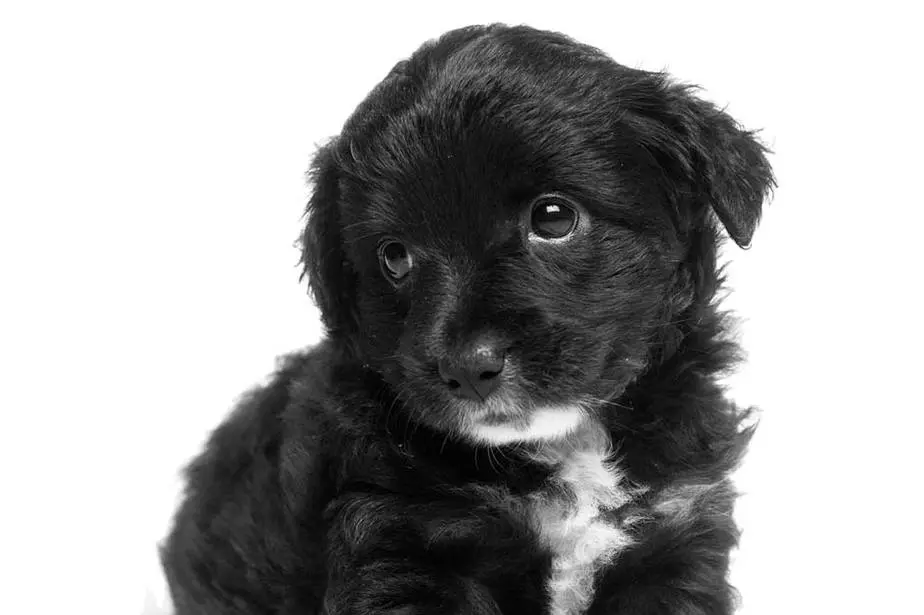
Why Your Puppy Won’t Poop Outside
Puppies won’t poop outside if they dislike the feel of grass, it’s cold, it’s raining, or they’ve been inadvertently trained to use their bowels inside. If you haven’t cleaned your house of puppy poop with an enzymatic cleaner, the smell can also trigger your puppy to poop.
There are other consideration though…
Your puppy may also have realized that when they poop outside, you bring them inside. They then can associate their pooping as the cue for playtime to be over. They may then hold their poop to stay outside for longer, in which case you give up, bring them inside and then they do their poop!
Or it could be entirely the opposite reason and your puppy really doesn’t like going outside. This can be especially true if it’s winter and it’s cold or it’s raining.
Your puppy may just prefer to be indoors where it’s comfortable, and when they’re comfortable, they’re at most ease to relax and do their business.
Another reason is that puppies are excited by new smells, sites, and sounds. When they’re outside they may be overwhelmed by their surroundings and find little time for pooping as everything is a distraction.
Your puppy may have also just learned that pooping inside is what they’re supposed to do. This can happen when pee pads are used in house-training, and your puppy has learned to go potty indoors rather than out.
Finally, if you’re finding anything unusual about your puppy’s poop, then you should take them to their vet. If their poop is runny, or bloody, or if they’re not pooping 1 to 5 times a day, then they may have a medical issue going on which needs to be addressed.
If you’re wondering why it’s taking so long to housetrain your puppy, read our guide on Puppy Still Not Housetrained and Age Expectations.
How to Avoid Accidents
You’re not going to stop all the inside accidents when your puppy is learning to poop outside. You can only do your best to catch them before they feel the need to go.
If they’re about to poop inside, swoop in and take them under the arms and carry them outside. They will find it difficult to poop in this position.
If they’re about to start and there’s no way you can get to them, use an interruption command, such as a high-pitched squeal to quickly get their attention. This can buy you the extra time to swoop in!
Once your pup is outside, place them in the desired location and say, “Go potty!” (or your chosen command).
Be sure not to scold them or raise your voice through this process. You want to avoid causing any anxiety. Once they poop outside remember to tell them what a good puppy they are.
The last thing you want is your puppy feeling anxious when it comes to their pooping!
If you miss one and your puppy has done a poop inside, don’t scold them or put their nose up to it and tell them off. This will only lead to anxiety and bring about unwanted behaviors associated with this.
Sometimes there will be poops that get through the gate during this training period, and that’s just part of being a new puppy owner.
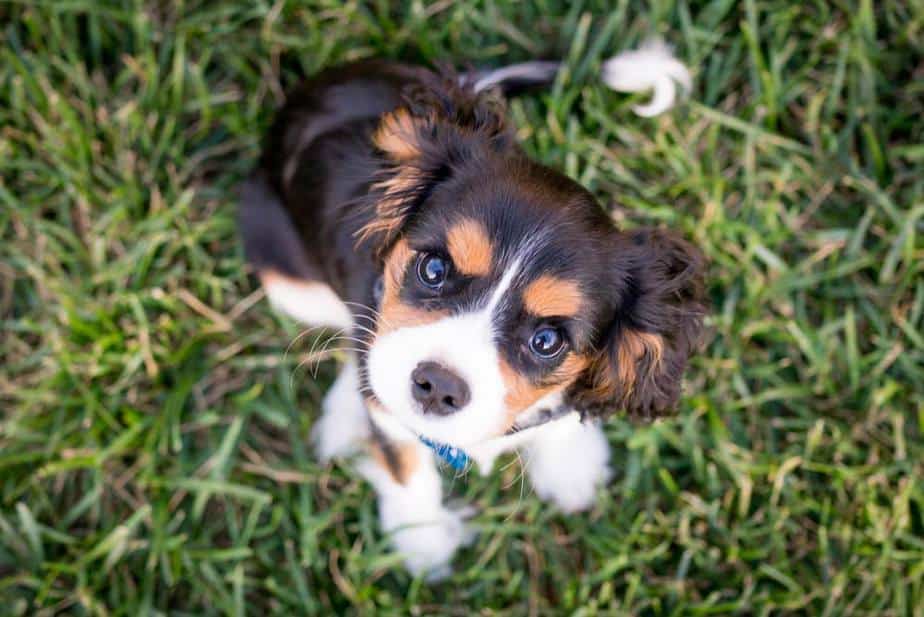
How to Get Your Puppy Pooping Outside
How quickly and easily it is to train your puppy to go potty outside will depend on the reason behind your puppy’s indoor pooping. By using the following training suggestions, you should have little problem in teaching your puppy your desired outcome.
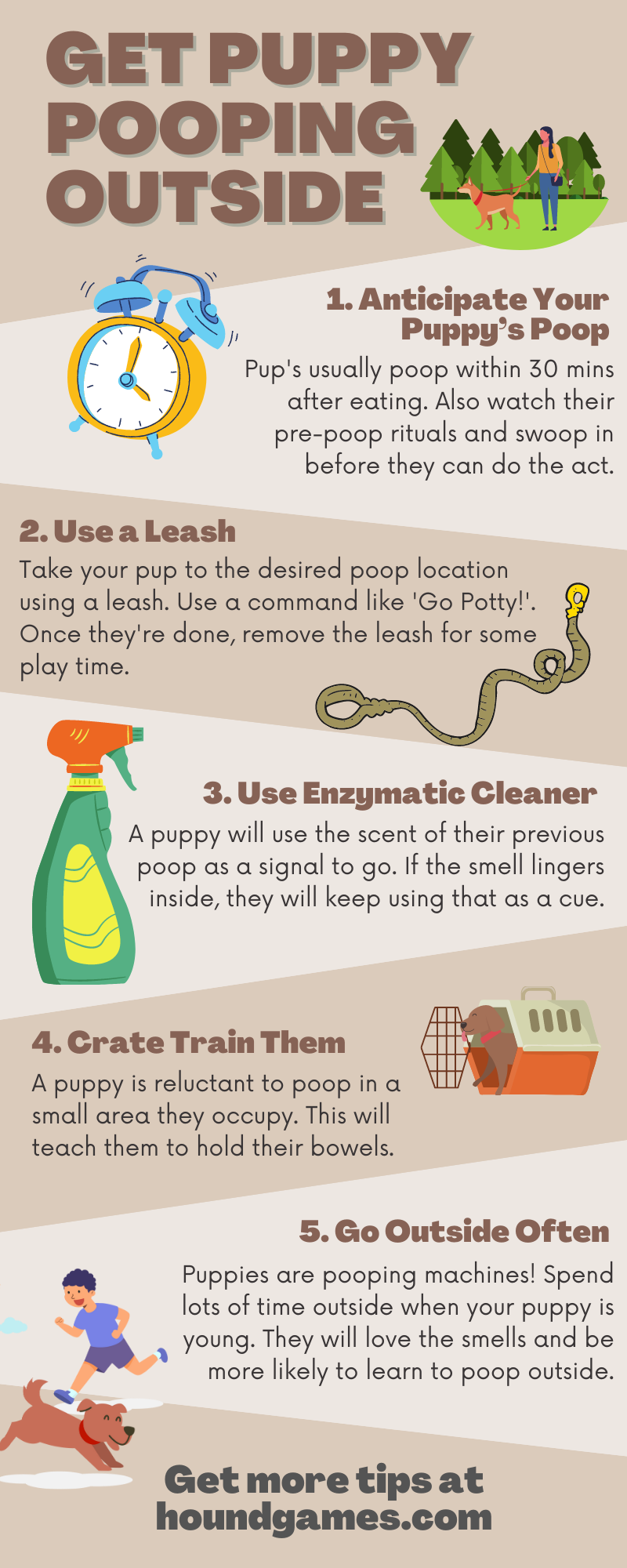
Anticipate Your Puppy’s Poop
In order to have control over your puppy’s pooping habits, you first need to have an awareness of when they’re most likely to go. The more often you catch them before the act happens, the more likely you’ll be able to direct their business to the outdoors.
Your puppy will generally eliminate within 30-minutes after every meal. If you’ve been doing a training session with them feeding treats this will also start the clock on your puppy’s digestive system.
Your puppy will poop anywhere from 1 to 5 times a day, and this will depend on how frequently you feed them or give them treats. If they’re eating three or more small meals a day, or you feed your puppy by leaving out their daily food and they snack all day long, then these pups will poop more regularly.
Be watchful of their behavior leading up to a poop and learn the signals. These behaviors can be subtle, so watch for ritualistic actions before they go.
Signs they need to go can include:
- Sniffing
- Circling
- Whining
- Scratching at the door
- Restlessness
Knowing Their Schedule
It’s also a good idea to chart their pooping schedule. It doesn’t need to be marked out in seven shades of highlighters. Just a daily notepad keeping track of their habits, so you have a good idea of how many times they go as well as what they were doing beforehand.
They will often go in the morning, after meals, after playtime, and after long naps.
Leash Method
Once you have a good handle on when they’re likely to go, you can take them outside during these probable times.
We recommend leashing them, taking them outside and walking around a little. Take them to a desirable location, then say, “Go potty!” or “Wees and poos!” It doesn’t matter what it is, as long as it’s always the same.
Now you play the waiting game. If they go, praise them, and show them how happy you are. Now let them off the leash for a run around.
It’s important that you don’t take them straight back inside at this point. If you do, they may associate their pooping as the reason for being taken back inside, and so they’ll hold it in next time.
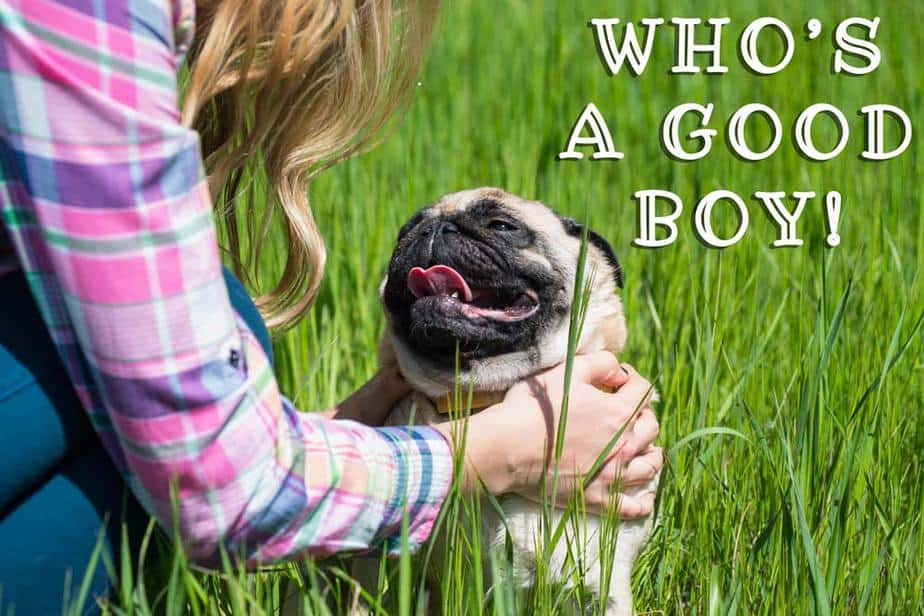
Use Enzymatic Cleaners
When your puppy does poop in the house, be sure to always use a cleaner that will completely remove the smell of your puppy’s poop. They have an ultra-sensitive sense of smell and being able to smell their own poop in the house will send a signal to them that this is the place to poop.
We like Nature’s Miracle Advanced Dog Stain & Odor Remover as it’s a ready-to-go spray solution that will eliminate any odors, and we also recommend, Live Odor Free.
Crate Train Them
If you haven’t done so already, crate training a puppy is a great tool for house-training, as well as giving your pet a sense of security. Puppies love to know they’re safe and a crate is a spot that’s all their own.
The reason why crate training assists in house-training is your puppy will be reluctant to poop in a small area they occupy. This will teach them to hold their bowels.
Whenever you take your puppy from their crate, carry them outside immediately, or you can use a leash and follow the directions under the leash method.
If you just let them out of their crate, they won’t wait to go outside before pooping, so be quick to take them to the desired location.
Once they go potty, reward them with praise or a treat.
Go for Walks
Puppies are too young to take for long walks, but a short stroll is a good way to get them using their bowels outside. This is especially important after meals.
This chart shows how long you should walk your puppy, though this is only a guideline. Some breeds, such as cattle dogs, can go above this recommended time.
| Puppy Age (months) | Exercise Time (minutes) |
|---|---|
| 1 | 5 |
| 2 | 10 |
| 3 | 15 |
| 4 | 20 |
| 5 | 25 |
| 6 | 30 |
| 7 | 30+ |
By taking them often for little walks around the yard or up the street, you will give them plenty of opportunities to poop outside.
When they poop remember to say “Go potty” so they associate your words with pooping, so you can use the magic words when you’re not walking them. When they poop be sure to reward them generously!
You might like to read our puppy exercise guide.
Go Outside Often
Your puppy will be a poop machine early on as they don’t have control over their bowels. Even though you can’t truly train them until they have that control (at 12-14 weeks) you can start associating their pooping with the outdoors.
At any age, and especially during house-training, take them outside as much as you can. Once every hour is a good guide, and although that might seem like a lot, your early work will pay dividends later on.
If you’re concerned about vaccinations and going outside, please read Puppy Vaccinations: When Can They Go Outside?
Are They Comfortable?
When your puppy poops, they can feel vulnerable. If they have any anxiety at all when they’re outside, they’re more likely to hold it and poop inside. Is there a dog next door that’s a little scary? Or loud noises? Or is there a particularly large object that they don’t go near? All these things can be deterrents to your puppy.
This is why it’s so important for you to spend as much time as you can outdoors with them. You can feed them outside, play with them, walk them around the yard with a leash, do your training outside, and most importantly, use treats outside.
All these things will improve their perception of outdoors and make them more likely to go potty.
And if you’re still concerned about your dog’s house-training progress, we recommend you check out this program that can house-train a dog in under 7 days.
You may also be interested in reading this: Puppy Takes a Long Time to Poop
Or if your puppy is struggling to poop, you might like to read: Puppy Hasn’t Pooped: How Long Can They Go?
When It’s Raining and Cold
A puppy will definitely be less inclined to poop outside when it’s raining or during the winter season. And if it’s snowing then you’ll have an even harder time.
It’s important to teach them that the rain isn’t their enemy. Next time it’s raining, be sure to grab your raincoat and the leash. Take them for a small walk and be generous with your praise. Your puppy will soon love the rain!
If it’s snowing, be sure to put some boots on their feet so it’s not too cold for them. Then likewise with the rain, spend some time with your puppy outside when there’s snow.
Clear an area of the snow too so they can smell where their poop has been before. It will also give them a more comfortable location to get into position.
It’s a good idea to get them a warm jacket for the colder weather.
The more time you spend outside with your puppy, the more they will love it no matter what. Get yourself some warm clothes and be sure to go walking… rain, hail, or shine. Well, maybe not hail!
Have you read our post, At What Age Do Puppies Stop Pooping at Night?
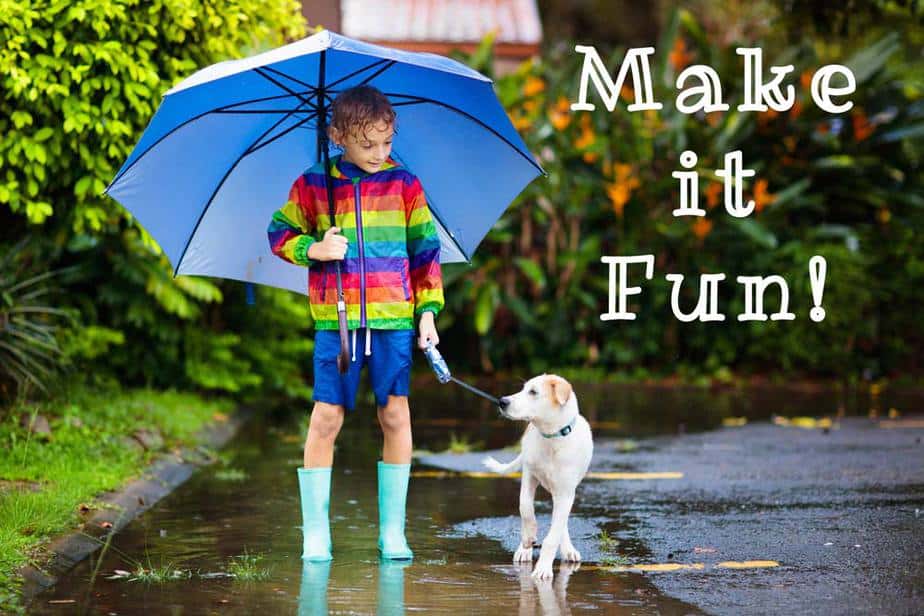
Final Word
Here are some of the important steps we covered in this post:
Be patient with your puppy. Accidents will happen and scolding or punishing your puppy will draw out the process. And causing anxiety for your puppy may create new problems for you!
Use verbal cues like “go potty,”. They will begin to associate the cue with eliminating. That way you won’t be waiting around in the cold for your pup to poop!
Be sure to use a crate and also remember to watch for signs they need to go.
Be sure to always use positive reinforcement. Rewarding your puppy with treats and praise when they poop outside will do wonders for their progress.
The more you show them that outside is a positive environment the more likely they will poop outside. From personal experience, I’ve used the leash method to great success.
As always if you have any additional concerns be sure to visit your veterinarian.

